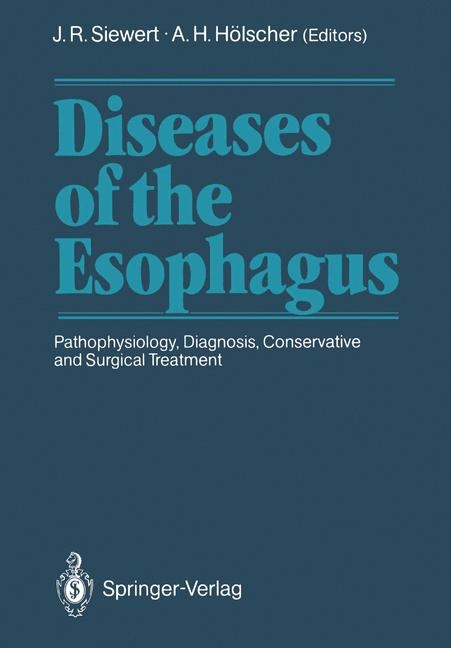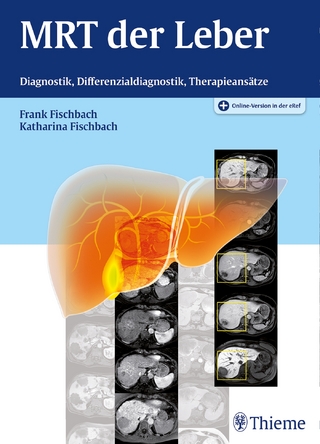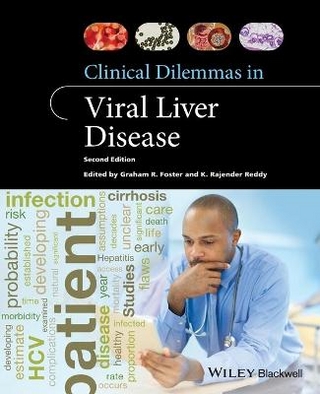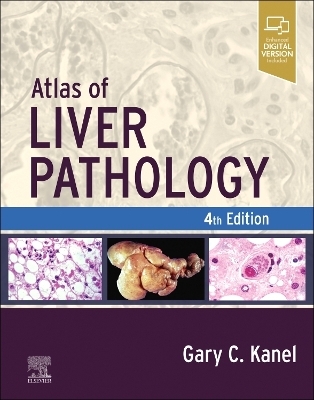
Diseases of the Esophagus
Springer Berlin (Verlag)
978-3-642-86434-6 (ISBN)
- Titel wird leider nicht erscheinen
- Artikel merken
Esophageal Cancer.- Epidemiology.- Epidemiology of Esophageal Cancer in China.- Epidemiological Study on Esophageal Cancer in Japan.- Epidemiology of Esophageal Cancer from the European Point of View.- Epidemiology of Esophageal Cancer in South Americai.- Esophageal Cancer in Croatia (Yugoslavia).- Effects of a Local Apple Brandy from Normandy (Calvados) and of Ethanol 56° on Epithelial Cell Proliferation in the Esophagus of Rats.- Pathology.- Cytophotometric DNA Analysis of Superficial and Advanced Carcinoma of the Esophagus.- Pathology of Squamous Cell Carcinoma of Esophagus.- Pathology of Adenocarcinoma of the Esophagus and the Gastroesophageal Junction.- Clinicopathological Study of the Development of Early Esophageal Carcinoma.- Malignant Transformation After Caustic Esophageal Injury: Report of Five Cases.- Changes in Lectin Binding Pattern of Human Esophagus in Association with Malignancy.- Histogenesis of Adenosquamous Carcinoma of the Esophagus.- Glandular or Mucus-Secreting Components in Squamous Cell Carcinoma of the Esophagus.- Correlation Between Inhibitory Effect of Retinoid on N-Nitrosomethylbutylamine-Induced Esophageal Carcinogenesis and Levels of Cellular Retinoic Acid-Binding Protein.- Promotion by 12–0-Tetradecanoyl, Phorbol-13-Acetate of Esophageal Carcinogenesis Induced in Rats by N-Methyl-N-Amylnitrosamine.- Promoting Effect of Alkaline Reflux on N-Amyl-N-Methylnitrosamine-Induced Esophageal Carcinoma in Rats.- Histopathological Studies of Esophageal Cancers Using Various Monoclonal and Polyclonal Antibodies.- The Prognostic Value of Flow Cytometric DNA Analysis in Human Esophageal Carcinomas.- Flow Cytometry in Cancer of the Esophagus and Gastric Cardia: Preliminary Observations.- Perineural Spread of Esophageal Carcinoma.- Relationship Between Lymphatic Metastasis and Continuity of Basement Membrane in the Esophageal Cancer.- Metastasis of Carcinoma of the Thoracic Esophagus to the Cervical Lymph Nodes.- Early Detection.- New Measures for Early Detection of Carcinoma of the Esophagus.- Early Detection of Carcinoma of the Esophagus.- Postcorrosive Stricture and Carcinoma of the Esophagus.- Detection of Occult Carcinoma of the Esophagus by Toluidine Blue Staining in High-risk Patients.- Carcinoma of the Esophagus Arising in Patients with Prior Exposure to Radiotherapy.- Superficial Esophageal Carcinoma with Special Reference to X-Ray Diagnosis.- Preoperative Staging.- New Techniques.- Endoscopic Vital Staining in the Diagnosis of Esophageal Cancer.- Preoperative Esophageal Submucography in Esophageal Cancer.- A New Method of Visualizing the Lymph Nodes of Esophageal Carcinoma using Superimposed Lymphoscintigraphy.- The Value of Scintigraphy in Staging Esophageal Carcinoma.- Preoperative Evaluation of Resectability of Esophageal Cancer by CT and MR Imaging.- MRI and CT Findings of the Paraesophageal Organs and Mediastinal Lymph Nodes with Invasion or Metastasis of Esophageal Carcinoma.- The Value of Ultrasonography for Preoperative Staging of Esophageal Carcinoma.- The Role of Endoscopic Ultrasonography in Preoperative Staging of Esophagus Malignancy.- Evaluation of Preoperative Stage of Esophageal Cancer by Endoscopic Ultrasonography.- Preoperative Staging of Esophageal Cancer by Endoscopic Ultrasonography.- The Use of Operative Ultrasonography for Esophageal Cancer.- Computed Tomography (CT).- How Accurate is Preoperative Staging by Computed Tomography in Esophageal Carcinoma.- Preoperative Evaluation of Local Resectability of Esophageal Carcinoma by Computed Tomography.- Usefulness of Computed Tomography in Assessing the Extension of Carcinoma of the Esophagus and Gastroesophageal Junction.- Computed Tomographic Assessment of the Mediastinum and Characteristics of Mediastinal Extension in Cancer of the Thoracic Esophagus.- Reevaluation of Computed Tomography in Preoperative Staging of Esophageal and Cardial Cancers: A Prospective Study.- Computed Tomography Scan Evaluation for Resectability of Adenocarcinoma of the Esophagogastric Junction.- Preoperative Assessment of Tumor Invasion of the Intrathoracic Esophageal Carcinoma.- Valuation of Preoperative Diagnostics for the Operability.- Perioperative Management.- Anesthesia, Artificial Respiration, Intensive Care.- Necessity for Postoperative Artificial Respiration in Esophageal Surgery.- Resection of Esophageal Cancer by One-Lung Anesthesia.- Risk Factors of Pulmonary Complications Following Esophagectomy in Carcinoma of the Esophagus: Results of the Prospectice Study Conducted by the OESO Group.- Pulmonary Complications Following Surgery for Esophageal Cancer.- Transthoracic Esophagectomy Combined with Regional Lymphadenectomy and Reconstruction with Delayed Urgency Versus Transmediastinal Esophagectomy and Immediate Reconstruction: Effect on Cardiopulmonary Function.- Influence of Transthoracic and Transmediastinal Esophagectomy and of Various Degrees of Gastric Filling on Cardiopulmonary Function: Preliminary Results of an Experimental Study in the Dog.- Changes of Hemodynamic Parameters, Pulmonary Gas Exchange, and Extravascular Lung Water During Esophageal Cancer Surgery.- Analysis of Cardiopulmonary Function in Esophageal Cancer Patients Prior to Surgery.- Changes in the Plasma ADH Level During and After Surgery for Esophageal Cancer.- Cardiac Arrhythmias in the Early Postoperative Period Following Esophagectomy.- Surgical Treatment for Patients 70 Years of Age or Older with Carcinoma of the Esophagus.- Parenteral and Enteral Nutrition.- Effect of Preoperative Hyperalimentation for Patients with Esophageal Cancer and Usefulness of the Nutritional Assessment Index.- A Prospective Study on Preoperative Parenteral Nutrition for Patients with Esophageal Cancer.- Significance of Active Nutritional Support for Maintenance of Immunopotentiation in the Surgical Treatment of Esophageal Cancer.- Appraisal of Hyperalimentation and Nutritional Assessment in Esophageal Cancer Surgery.- Early Enteral Versus Parenteral Nutrition After Esophagectomy.- Enteral Nutrition by Jejunostomy After Esophageal Surgery.- Effect of Nutritional Support as an Adjunct to the Treatment of Esophageal Cancer.- Value of Supplementary Parenteral Nutrition During Primary or Postoperative Radiation Therapy of Esophageal Cancer.- Most Recommendable Postoperative Nutrition for the Patients with Esophageal Cancer.- Irradiation and Chemotherapy.- Preoperative Chemotherapy or Concurrent Chemotherapy and Radiation in Esophageal Cancer.- Perioperative Treatment of Esophageal Cancer.- Evaluation of Preoperative Irradiation Therapy for Carcinoma of the Esophagus.- Value of Preoperative Chemotherapy in the Management of Locoregional Esophageal Carcinoma.- A Study of the Clinicopathological Effects of Chemotherapy for Human Esophageal Carcinoma.- Studies on Preoperative Treatment for Esophageal Cancer and Prognosis of Markedly Effective Cases.- Preoperative Chemotherapy and Surgical Resection for Squamous Cell Carcinoma of the Esophagus.- Evaluation of Chemotherapy Using Cisplatin and Efficacy of Subrenal Capsule Assay for Esophageal Cancer.- Multidisciplinary Treatment for Intrathoracic Esophageal Cancer: CDDP Plus Irradiation.- Preoperative Hyperthermochemoradiotherapy for Carcinoma of the Esophagus.- An Evaluation of Postoperative Prophylactic Irradiation for Esophageal Cancer.- Late Results of Locally Adjuvant Chemotherapy with Entubed Solidified Bleomycin Against Abdominal Lymph Node Metastasis After Surgical Treatment of Esophageal Cancer.- Actual Classification of Esophageal Cancer.- New TNM Classification of Carcinoma of the Esophagus.- Classification of Esophageal Cancer.- Staging of Esophageal Cancer Based on Wall Penetration and Lymph Node Status.- Summary of the Panel on “Actual Classification of Esophageal Cancer”.- Surgical Technique for Esophageal Cancer.- Early Cancer and Blunt Dissection.- Diagnosis and Treatment of Early Esophageal Cancer.- Treatment of So-Called Early Esophageal Carcinoma.- Blood Supply of the Esophagus in Relation to Esophagectomy.- Transhiatal Esophagectomy for Esophageal Carcinoma.- Blunt Esophagectomy Without Thoracotomy for Carcinoma of the Esophagus: Experience with 127 Patients.- Esophagectomy Without Thoracotomy Using the Cervicoabdominal Approach for the Management of Esophageal Carcinoma: Results.- Experience with Esophagectomy Without Thoracotomy in 67 Cases.- Specific Complications of Blunt Dissection of the Esophagus.- Transthoracic Approach, Reconstruction.- Selection of Patients for En Bloc Esophagectomy.- Cardinals in the Regional Lymph Node Dissection in Surgery of Thoracic Esophageal Cancer.- Extended Lymph Node Dissection for Thoracic Esophageal Cancer.- Esophageal Cancer: En bloc Esophagectomy with Mediastinal Lymphadenectomy and Esophageal Reconstruction with Delayed Urgency.- Left-Sided Subtotal Esophagectomy for Carcinoma.- Neurovascular Manipulation for Safer Surgery of Thoracic Esophageal Cancer.- How Vulnerable is the Recurrent Laryngeal Nerve in Esophageal Surgery?.- Reconstructive Surgery of the Esophagus with Stomach for Esophageal Carcinoma: An Analysis of 368 Cases.- Separated and Pedicled Wide Gastric Tube as an Esophageal Substitute.- Resection and Replacement in the Treatment of Cancer of the Esophagus and the Esophagogastric Junction.- A New Technique: Insertive Esophagogastrostomy.- Reconstruction of the Esophagus with Pedicled Colon Segment for Esophageal Cancer.- Total Esophageal Replacement with Revascularized Jejunum.- Stapler, Leakage, Local Recurrences.- The Prone Position for Operations Upon the Esophagus.- Mechanical Sutures in Esophageal Surgery.- The Influence of Stapled Anastomosis Compared with Handmade Anastomosis on Complication Rate and Mortality After Resection of Esophageal Carcinoma.- Clinical Experience in 150 Cases Using the Esophageal Tube-Shaped Anastomotic Stapler.- Esophagovisceral Anastomotic Leaks: Prevention, Diagnosis, and Treatment.- Local Recurrence After Subtotal Esophagectomy for Cancer.- Carcinoma of the Cervical Esophagus and Hypopharynx.- Total Pharyngolaryngoesophagectomy Without Thoracotomy and Pharyngogastrostomy for Carcinoma of Sinus Piriformis.- Antesternal Pharyngogastrostomy and Esophagogastrostomy by Oral Insertion of a Curved Stapler.- Appraisal of Free Skin Flaps in the Reconstruction of Hypopharynx and Cervical Esophagus.- Reconstruction of the Cercival Esophagus by Microsurgical Transfer of an Intestinal Segment.- Reconstruction of the Pharynx and the Cervical Esophagus with Free Transplanted Jejunum.- Esophageal Replacement Using Free Intestinal Grafts in Patients with Carcinoma Involving Both the Cervical and Thoracic Esophagus.- Value of Postoperative Continuous Measurement of Tissue Oxygen Tension in Microvascular Free Jejunum Transfer for Reconstruction of Hypopharynx and Cervical Esophagus.- Prognosis of Esophageal Substitute in Tissue Viability and Anastomotic Leakage.- Endobrachyesophagus (Barrett’s Esophagus).- Frequency and Importance of Endobrachyesophagus in Reflux Disease.- Barrett’s Oesophagus: Does It Exist, Is It Congenital?.- Barrett’s Oesophagus: A Pathophysiological Study.- The Clinical Spectrum of Benign Penetrating Barrett’s Ulcers.- Barrett’s Esophagus: Late Results of Conservative Management.- Detection of Carcinoembryonic Antigen Intestinal Mucous Antigen, and Gastric Mucous Antigen in Adenocarcinomas Associated with Barrett’s Esophagus.- Early Adenocarcinoma of the Esophagus.- Adenocarcinoma in Columnar Lined Esophagus (Barrett’s Esophagus).- The Clinical Features and Biological Behavior of Adenocarcinoma of the Esophagus Complicating Barrett’s Esophagus.- Adenocarcinoma Complicating Columnar Epithelium-Lined (Barrett’s) Esophagus: A Clinical and Histological Study.- Adenocarcinoma of the Gastroesophageal Junction.- Surgical Classification for Adenocarcinomas of the Gastroesophageal Junction.- Adenocarcinoma of the Oesophagus and Cardia.- Surgical Treatment of Carcinoma of the Gastroesophageal Junction: An Analysis of 215 Cases.- Esophagogastrectomy Without Thoracotomy for Adenocarcinoma of the Cardia and Lower Esophagus.- Extended Total Esophagogastrectomy As Surgical Treatment of Cancer of the Cardia.- Adenocarcinoma of the Distal Esophagus and Gastric Cardia: Comparison of Results of Transhiatal Esophagectomy and Thoracoabdominal Esophagogastrectomy.- Thoracoabdominal Approach as a Routine Procedure for Adenocarcinoma of the Gastroesophageal Junction.- Antrum Versus Gastric Tube After Partial Esophagogastrectomy for Adenocarcinoma of Gastric Cardia.- Surgical Treatment in Cancer of the Cardia.- Surgical Treatment of Adenocarcinomas of the Upper Third of the Stomach and Gastroesophageal Junction.- Results of Surgical Treatment of Carcinoma of the Gastroesophageal Junction with Prevention of Postoperative Reflux.- Recurrence Rate after Resection of Cardia Cancer in Relation to Histological Type According to Lauren and Resection Margins.- Late Results of Surgery for Esophageal Cancer.- Results in Japan, China, North America and Europe.- Long-term Survival after Curative Resection of Carcinoma of the Thoracic Esophagus.- Late Results of Surgical Treatment for Carcinoma of the Esophagus.- Recent Results of Esophageal Cancer Surgery in North America.- Late Results of Surgical Treatment of Esophageal Cancer in Europe.- Functional Results.- Function of the Intrathoracic Stomach.- Functional Evaluation of Organ Interposition for Esophageal Replacement.- Functional Study of Ileocolic Interposition After Esophagectomy and Total Esophagogastrectomy.- Prospective Studies on Postoperative Nutritional Status in Patients with Esophageal Carcinoma as Evaluated from Various Substitutes for Reconstruction: Gastric Tube Versus Colon Interposition.- Recurrence, Survival.- Survival Results of Thoracic Esophageal Carcinomas.- Carcinoma of the Esophagus, Factors Influencing Survival.- Effect of Sexual Difference on Prognosis of Esophageal Cancer.- Results of Extended Dissection of Lymph Nodes in Operation for Thoracic Esophageal Cancer.- The Significance of Systematic Lymphadenectomy for Thoracic Esophageal Carcinoma.- Analysis of Surgical Treatment of Esophageal Cancer with the Aim of Obtaining Better Results.- Clinical Results of Improved Surgery for Carcinoma of the Thoracic Esophagus with Lymph Node Metastasis.- Prognostic Significance of Tumor Stage and Lymph Node Involvement in Thoracic Esophageal Cancer.- Patterns of Neoplastic Recurrence After Radical and Palliative Resection of Cancer of the Esophagus.- Palliative Treatment of Esophageal Cancer.- Prosthesis, Laser, Bypass, Irradiation and Chemotherapy.- Esophageal Prosthesis in the Treatment of Cancer of the Esophagus.- Palliation of Esophageal Carcinoma in Cardiopulmonary High-Risk Patients.- Laser Therapy for Esophageal Carcinoma.- Endoscopic Photodynamic Therapy for Esophageal Cancer.- Photoirradiation Treatment of Esophageal Cancer.- Palliative Treatment of the Upper Gastrointestinal Tract Using a Combination of Laser Therapy and Intracavitary Radiation.- Combined Primary Treatment of Cancer of the Esophagus and Cardia by Intracavitary and External Irradiation.- The Palliative Management of Esophageal Carcinoma.- Intrathoracic Gastric and Jejunal Bypass for Palliation of Nonresectable Carcinoma of the Esophagus and Gastroesophageal Junction.- Benign Diseases of the Esophagus.- Diagnostic Methods.- Functional Disorders.- Real Time Microcomputer Acquisition and Analysis of Esophageal Motility Data.- Computer-Aided Esophageal Manometry.- Pre- and Postoperative Radioisotopic Emptying of the Esophagus in Patients with Achalasia.- Computed Tomography Findings in Esophageal Intramural Pseudodiverticulosis.- Reflux Disease.- Can an Oesophageal pH Electrode be Accurately Positioned Without Manometry?.- Twenty-Four-Hour Four-Channel Esophagopharyngeal pH Monitored Via Satellite Esophageal pH Laboratories or by a Small Autonomous System.- Twenty-Four-Hour Home Esophageal pH Monitoring (EpH) in the Diagnosis of Gastroesophageal Reflux: Is It Worthwhile?.- Intraesophageal Twenty-Four-Hour pH-metry: An Indispensable Tool for the Diagnosis of Reflux Disorders.- Time-Related Variability of Gastroesophageal Reflux Episodes.- A Short-Term Radiotelemetric Provocation Test for the Diagnosis of Gastroesophageal Reflux Disease.- Nocturnal pH-Monitoring in the Diagnosis of Pathological Gastroesophageal Reflux.- Role of Three-Hour Postprandial Intraesophageal pH Monitoring in the Diagnosis of Gastroesophageal Reflux.- Ambulatory Twenty-Four-Hour Intraesophageal pH Monitoring: Correlations with Radiography, Endoscopy, and Manometry.- Scintigraphy Versus Manometry and Prolonged pH Monitoring for the Assessment of Esophageal Function.- Patterns of Radioisotopic Esophageal Transit in Patients with Symptoms of Gastroesophageal Reflux.- Quantification of the Duodenogastric Reflux in Gastroesophageal Reflux Disease.- Gastroesophageal and Duodenogastric Reflux: Simultaneous Twenty-Four-Hour Home Recording with a Three-Probe System (3EGpH).- Role of Combined Esophagogastric Twenty-Four-Hour pH-Monitoring in the Study of Reflux Esophagitis and Alkaline Gastropathy.- Duodenogastric Reflux in Patients with Reflux Esophagitis Assessed by Radionuclide Technique.- Summary of the Panel on “Useful Tests in the Assessment of Gastroesophageal Reflux”.- Cost Benefit of Diagnostic of Benign Esophageal Diseases.- Cost Benefit Aspects in the Management of Gastroesophageal Reflux Disease.- Cost Benefit Aspects of the Diagnosis of Gastroesophageal Reflux Disease: When and What Diagnostic Test?.- Cost Effectiveness of Diagnostic Endoscopy in Esophageal Diseases.- Summary of the Panel on “Cost Benefit of Diagnostic Maneuvers in the Esophagus for Benign Disease”.- Functional Disorders (Motor Disturbances, Spasm, Achalasia).- Pathophysiology, Classification, Surgical Treatment.- The Johns Hopkins Swallowing Center — Initial Experience.- Etiology of the Postprandial Increase in Lower Esophageal Sphincter Pressure: Evidence for Synergistic Control by Pancreatic Polypeptide and Vagal Influences.- Modern Nosologic Classification of Esophageal Disordered Motor Activity.- Esophageal Motor Abnormalities in Patients with Connective Tissue Diseases.- Esophageal Manometric Studies in Patients with Myasthenia Gravis.- Disordered Motor Activity of the Esophagus in Sclerodermic Patients with Gastroesophageal Reflux and Duodenogastric Reflux: pH-Manometric Study.- Surgical Management of Gastroesophageal Reflux in Patients with Scleroderma.- Management Options for Patients with Diffuse Esophageal Spasm.- Long Esophagomyotomy for Diffuse Esophageal Spasm and Related Disorders.- Long Esophageal Myotomy Through the Diaphragmatic Hiatus in the Treatment of Hypertensive Lower Esophagus Associated with Gastroesophageal Reflux.- Ultrastructure of the Gastroesophageal Junction in Achalasia.- Histology and Immunofluorescence of Esophageal Muscle in Achalasia.- Effect of Vasoactive Intestinal Polypeptide on the Cardiac Closing Mechanism and Pathophysiology of Achalasia of the Esophagus.- Importance of an Anti-Reflux Mechanism in the Surgery of Typical Achalasia of the Cardias.- Surgical Management of the Megaesophagus.- Results of the Fundic Patch Operation for Achalasia of the Esophagus.- Results of Surgical Therapy of Achalasia with Three Different Techniques.- Gastroesophageal Reflux After Myotomy for Achalasia.- Late Results of a Prospective Randomized Study Comparing Forceful Dilatation and Esophagomyotomy in Patients with Achalasia.- Long-Term Follow-up of Patients with Achalasia Treated by Myotomy and Partial Fundoplication.- Esophagomyotomy with Antireflux Procedures for Achalasia of the Esophagus: Clinical Comparison of Nissen Fundoplication and Belsey Mark IV.- Results of Transabdominal Cardiomyotomy with Dor Partial Fundoplication in the Management of Achalasia.- Long-term Evaluation of Gastroplasty in Achalasia.- Surgical Treatment After Failed Operations for Achalasia.- Reoperation After Failed Esophagomyotomy for Achalasia.- Recurrence of Esophageal Achalasia: Diagnosis and Treatment.- Management of Failed Heller’s Operations.- Servical Esophagus.- Motor Dysfunction of the Upper Esophageal Sphincter in Posterior Hypopharyngeal Diverticula: Results of a Motility Study by High-Speed Cineradiography.- The Pharynx in Achalasia.- Psychogenic Dysphagia and Globus — Reevaluation of 23 Patients.- Posterior Laryngitis: Its Association with Gastroesophageal Reflux and Intrinsic Asthma.- Does the Musculus Cricopharyngeus Play a Role in the Genesis of Zenker’s Diverticulum? Enzyme Histochemical and Contractility Properties.- Radionuclide Evaluation of Pharyngeal Emptying Before and After Cricopharyngeal Myotomy in Patients with Oculopharyngeal Muscular Dystrophy.- Reflux Disease.- Pathogenesis, Classification, Conservative Treatment.- Role of the Overall Length of the Distal Esophageal Sphincter in the Antireflux Mechanism.- The Role of the Lower Esophageal Sphincter’s Position to Competency of the Cardia: An Experimental Study in Cats.- Deranged Fasting Motor Activity in the Duodenum and Proximal Small Intestine in Patients with Reflux Esophagitis.- Gastric Emptying of Solids in Patients with Reflux Esophagitis and Peptic Strictures of the Esophagus Compared with Controls.- Prospective Study of 100 Patients with Gastroesophageal Reflux: Prognostic Value of Symptoms, Presence of Esophagitis, and Lower Esophageal Sphincter Pressure.- Acid Gastroesophageal Reflux and Occurrence of Reflux Symptoms: Are They Related?.- The Hourly Pattern of Gastroesophageal Reflux.- Intubation of the Cardia Does Not Increase Gastroesophageal Reflux.- Gastroesophageal Reflux Due to Nasogastric Tube: Preliminary Report.- Concomitant Duodenogastric and Gastroesophageal Reflux: The Role of Twenty-Four-Hour Gastric pH Monitoring.- Bile Salt Total Concentrations in the Stomach and Esophagus of Patients with Acid Gastroesophageal Reflux Disease.- Lysolecithin-Induced Mucosal Damage in Rabbit Esophagus.- A Possible Triggering Mechanism Producing Acid Gastroesophageal Reflux in Duodenal Ulcer Patients and Normal Volunteers.- Patterns of Reflux in Primary Reflux Esophagitis and in Patients with Recurrent Reflux After Previous Anti-Reflux Surgery.- A Study of the Interrelationship Between Esophageal Disease and Coronary Artery Disease as the Cause of Chest Pain.- Cimetidine: A Gastroesophageal Reflux Antagonist?.- Treatment of Reflux Esophagitis with Cimetidine in a Liquid Suspension.- The Effect of Adding Cimetidine to Alginate-Antacid in Treating Gastro-esophageal Reflux.- Cimetidine 800 mg at Bedtime in Reflux Esophagitis: A Multicentre Trial.- An Endoscopic Treatment for Gastroesophageal Reflux.- Conservative Treatment of Reflux Disease Today.- Treatment of Reflux Esophagitis: Results of a Multicentre Study.- Histomorphology of Esophageal Reflux Disease: Results of Biopsy Histology in a Multicentre Trial with Cimetidine.- Medical Therapy of Reflux Esophagitis.- Conservative Therapy of Gastroesophageal Reflux.- Medical Therapy of Gastroesophageal Reflux Disease Assessed by Twenty-Four-Hour Esophageal pH Monitoring.- Surgical Treatment.- Severe Peptic Esophagitis: Classification and Treatment.- Does Anti-Reflux Surgery Reduce or Eliminate Gastroesophageal Reflux?.- Preoperative Manometry for Antireflux Surgery.- Pexy with the Round Ligament: The Sling Approach.- Lower Esophageal Sphincter Characteristics After a Simplified Anti-Reflux Procedure.- Surgical Restoration of the Gastric Cardia.- Effects of Total Fundoplication on Gastric Physiology.- Pre- and Postoperative Prolonged pH and Manometric Studies in Patients Undergoing V-Y Gastroplasty with Partial Fundoplication.- Symptoms 10–20 Years After Fundoplication.- Post-Nissen Syndrome.- Long-term Effects of Total Fundoplication on the Myotomized Esophagus.- Gastroesophageal Reflux: Experience of Gastrointestinal and Surgical Units.- Reversibility of Esophageal Clearing Disturbances in Esophagitis After Anti-Reflux Surgery.- Gastric Emptying, Gastroesophageal Reflux, and Antireflux Surgery.- Esophageal Aperistalsis Following Fundoplication and Fundoplication Gastroplasty: A Comparative, Prospective Study.- The Complete, Loose Fundoplication: Results of Operation for Severe Reflux Esophagitis 1975–1985.- Early Experience of Nissen Cuff Construction Using Marlex Mesh as Reinforcement for Nissen Cuff Fundoplication.- Posterior Hemifundoplication for Gastroesophageal Reflux.- Valvuloplasty: A New Surgical Antireflux Procedure.- Combined Collis Gastroplasty-Nissen Fundoplication Operation for Esophageal Reflux Strictures.- Surgical Management of Peptic Esophageal Strictures.- Gastrectomy and Roux-Y Duodenal Diversion as Treatment for Severe Reflux Esophagitis.- Reoperations After Complications or Failure of Antireflux Surgery.- Results of Reoperation for Recurrent Esophagitis Following a Previous Antireflux Procedure.- Surgical Treatment of Reflux Disease Today.- Thirty Years of Nissen Procedure — Development of Fundoplication.- Development of the Mark IV Antireflux Procedure.- The Belsey Mark IV Antireflux Procedure.- Highly Selective Vagotomy, Posterior Gastropexy, and Calibration of the Cardia for Reflux Esophagitis.- Nissen Fundoplication for Gastroesophageal Reflux Disease.- Gastroplasty and Partial Fundoplication in Patients with Peptic Esophagitis and Acquired Shortening: Results in Long-Term Follow up.- Use of a Prosthetic Device for Control of Gastroesophageal Reflux: A 13-Year Experience.- Summary of the Panel on “Surgical Treatment of Reflux Disease Today”.- Postoperative “Alkaline” Reflux.- Postoperative Reflux Esophagitis with the Use of 24-Hour Esophageal pH Monitoring.- Enterogastric Reflux Detected by Cholescintigraphy, Assessment of Bile Acids in Gastric Aspirates, and Gastric pH Monitoring: Comparison of Results in Partially Gastrectomized Patients.- Reconstructive Procedures for Total or Proximal Gastrectomy and Postoperative Reflux.- Surgical Correction of Reflux Following Previous Gastric Surgery; Five-Year Review.- A Modified Roux-en-Y End-To-End Gastrojejunostomy in the Treatment of Postoperative Alkaline Reflux: Preliminary Results.- Investigations of Esophagoenteral Anastomoses by Manometry and pH-metry and Evaluation of Antireflux Reconstructions.- Esophageal Perforations.- Esophageal Perforations I. Etiology, Diagnostic, Localization and Symptoms. A GEEMO Questionnaire.- Esophageal Perforations II. High Risk Group Patients and Treatment. A GEEMO Questionnaire.- Temporary Esophageal Exclusion by Stapling in Esophageal Ruptures.- Endoscopic Perforation of the Esophagus: Treatment and Results.- Multimodality Approach to the Treatment of the Early and Late Esophageal Disruptions and Perforations.- Conservative Treatment of Esophageal Postoperative Fistulas.- Treatment of Postoperative Fistula and Stricture with Myocutaneous Flap.
| Erscheinungsdatum | 19.12.2018 |
|---|---|
| Zusatzinfo | XXV, 1400 p. 340 illus. |
| Verlagsort | Berlin |
| Sprache | englisch |
| Maße | 170 x 244 mm |
| Themenwelt | Medizinische Fachgebiete ► Innere Medizin ► Hepatologie |
| Schlagworte | Cancer • carcinoma • epidemiology • Esophagus • pathogenesis • pathophysiology • Staging |
| ISBN-10 | 3-642-86434-1 / 3642864341 |
| ISBN-13 | 978-3-642-86434-6 / 9783642864346 |
| Zustand | Neuware |
| Haben Sie eine Frage zum Produkt? |
aus dem Bereich


